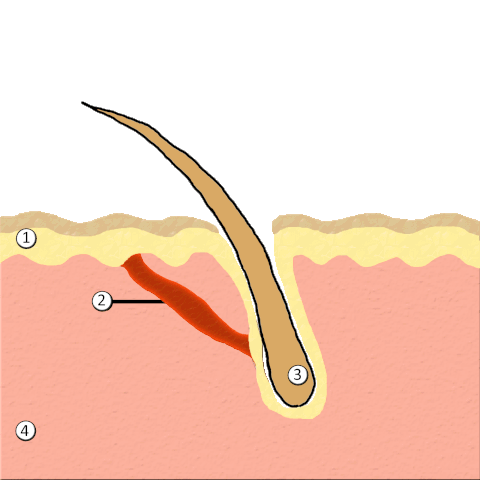We all get goosebumps from time to time – but the question no one has been asking is why.
We all get goosebumps from time to time – but the question no one has been asking is why.
We’ve all had the feeling: there’s a sudden chill in the air… or Miley Cyrus comes on the radio… a shiver runs down your spine and your hair stands on end… and then your skin goes from smooth to bumpy in a flash…
Why does that happen?
A team from Harvard University finally has some answers, at least for the cold part.
In a paper published in Cell this week, scientists reported that the goosebumps help stimulate the stem cells that promote hair growth – the idea being that the short-term shiver you get in response to the cold (which causes goosebumps) actually helps signal to the body that things are getting chilly out there and the body should grow more hair so it can stay warm. Genius. Don’t you love biology?

Underneath the skin, there’s a muscle that contracts in response to cold and causes the skin to go all bumpy.
The reason that muscle contracts when it’s chilly is because it’s hooked up to the sympathetic nervous system, which maintains homeostasis.
When the researchers looked at this muscle using high resolution electron microscopy, they found that this sympathetic nerve was not only associated with the muscle, but also formed a direct connection to the hair follicle stem cells.
“In fact, the nerve fibres wrapped around the hair follicle stem cells like a ribbon,” The Harvard Gazette reported.
“When [the researchers] removed the muscle connected to the hair follicle, the sympathetic nerve retracted and the nerve connection to the hair follicle stem cells was lost, showing that the muscle was a necessary structural support to bridge the sympathetic nerve to the hair follicle.”
So, essentially, this research in mice showed that the body has a clever way to communicate information about changes in outside temperature to the stem cells that control hair regeneration and growth – and goosebumps are a central link in that communication network.

As to why TMR has the same defensive hackle-raising reaction to the sound of a pop siren’s voice, further research is needed.
Also – fun fact – did you know the scientific word for goosebumps is “piloerection”?
And here’s another one… did you know some people can make their skin go goosefleshy at will?
Some Australian research on undergraduates at the University of Sydney published in 2018 suggested that people who could control their goosebumps tended to have the personality trait of “openness to experience” – which means you are fully entitled to an extra feeling of superiority if you have this superpower.

If you see something stupid, say something stupid… Send your hot tips for The Back Page to felicity@medicalrepublic.com.au


